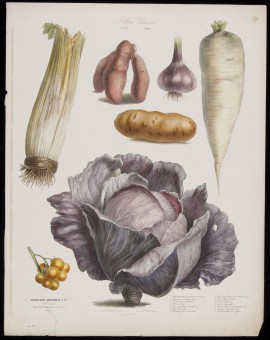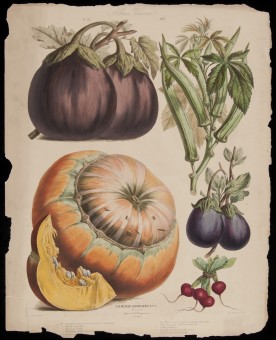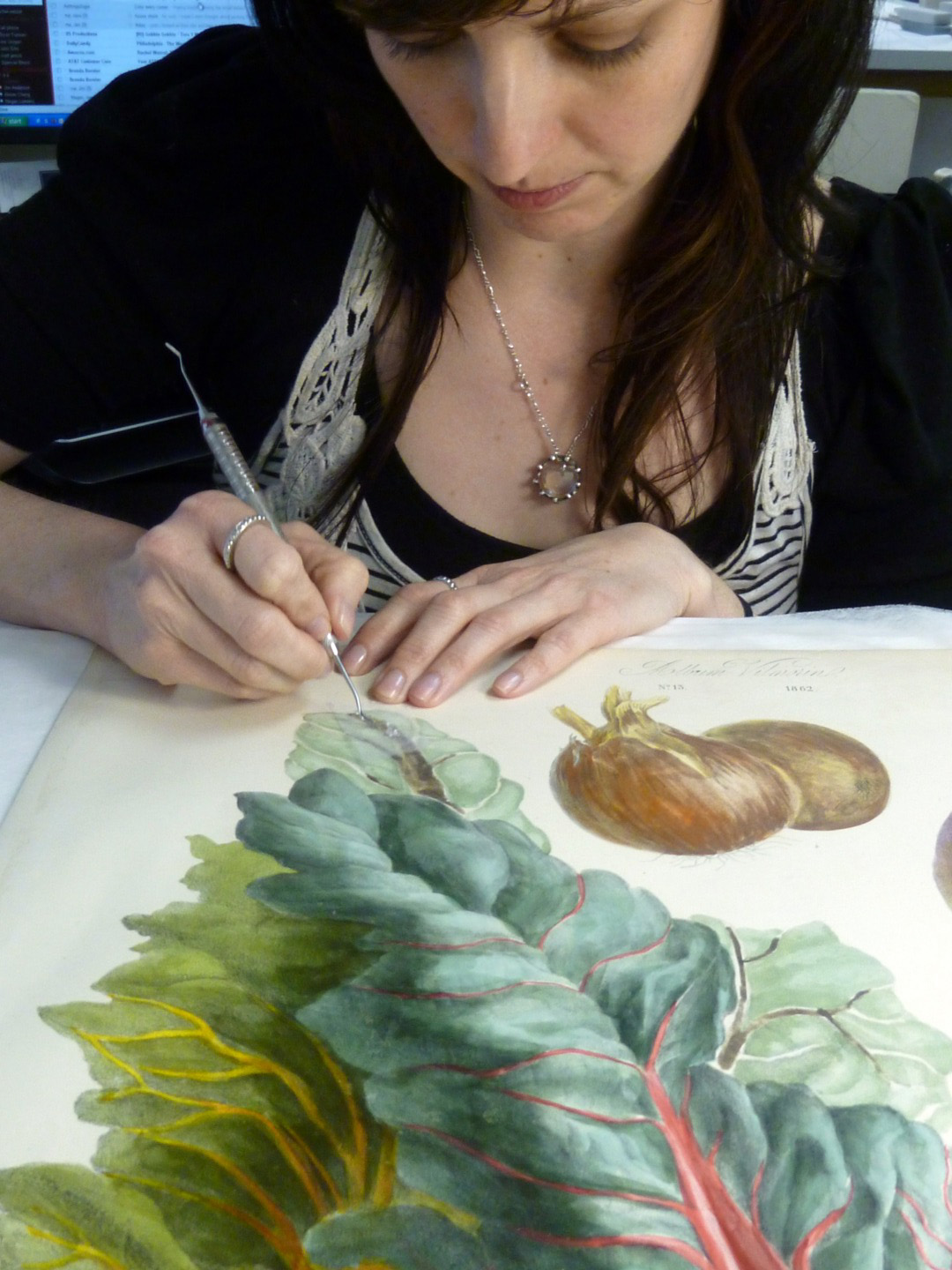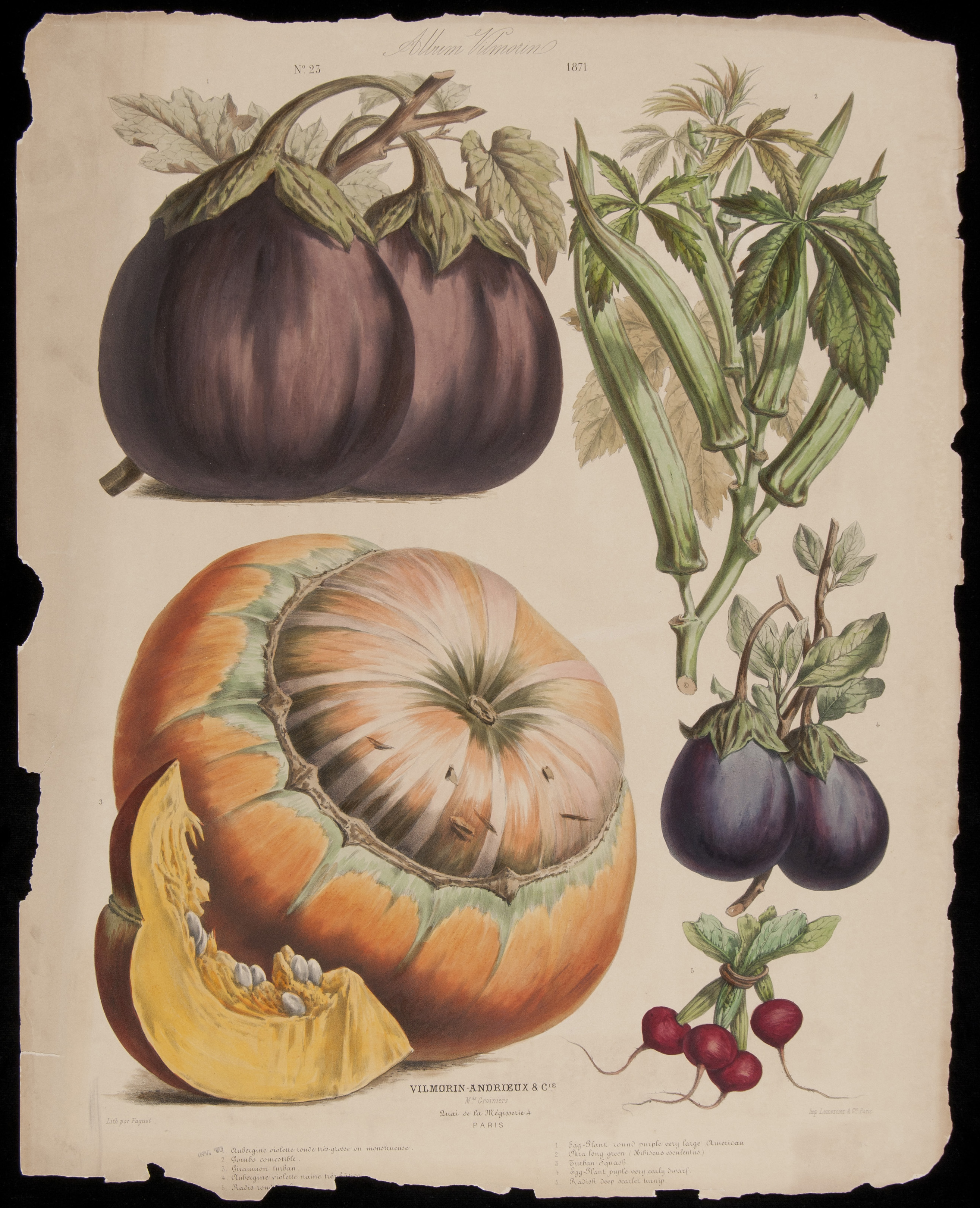Treatment FOCUS: Plates from the National Agricultural Library
Started in the 1700s by a grain merchant and the Botanist to the King, the French company Vilmorin-Andrieux & Cie grew to become the most important seed company in the world by the mid-1800s, known not only for its incredible rate of production but for its scientific research on selection and heredity. Along with the company’s growth came increasingly admired publications: first, in 1766, its seed catalog; next, a series of informative publications périodiques; and finally, in 1850, Album Vilmorin, a collection of large, colorful illustrations of plants and vegetables. The company released one hand-colored lithograph each year until 1895. Originals are now rare, prized for both their beauty and their value to research on plant evolution.

The National Agricultural Library holds 11 Album Vilmorin plates that CCAHA recently conserved. All the prints exhibited tears, discoloration, and overall soiling, but three showed a terrible disfiguring from lead white pigment that had chemically converted to a dark brown or shiny black due to prolonged exposure to air.

Photograph Conservator Rachel Wetzel applying dilute bleach to an area where lead white pigments have chemically converted to dark brown
Photograph Conservator Rachel Wetzel and National Endowment for the Arts Fellow Marion Verborg surface cleaned the plates, mended tears, and reinforced losses. They then tackled the darkened lead white paint, called lead sulfide.

Usually, lead sulfide is converted to white by placing hydrogen peroxide (dilute bleach) on a brush or poultice, such as methyl cellulose, and applying it to the affected area. In this case, however, Wetzel feared that the watery dilute bleach and methyl cellulose would spread into nearby water-sensitive pigments. She concocted a thicker gel (made from the gelatinous agarose typically used to fill Petri dishes in biology labs) that could be cut into shapes to fit the affected area. Applied over thin Japanese tissue paper, the gel sat for 10-15 minutes. Wetzel and Verborg then alternately placed wet and dry blotters over the area to remove the bleach residues while weighting the paper to prevent distortion. Finally, with the plates humidified and flattened, they were returned to the National Agricultural Library in alkaline paperboard folders.
The National Agricultural Library funded the conservation of the Album Vilmorin plates through the sale of products developed using images from their Rare and Special Collections.


